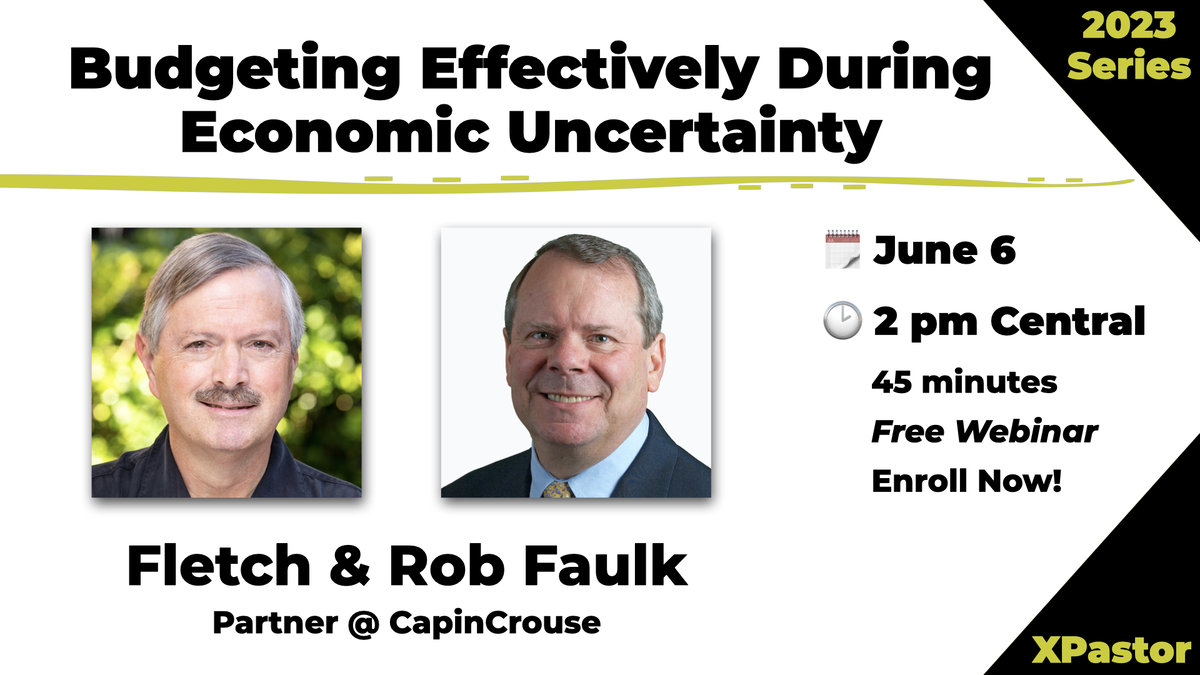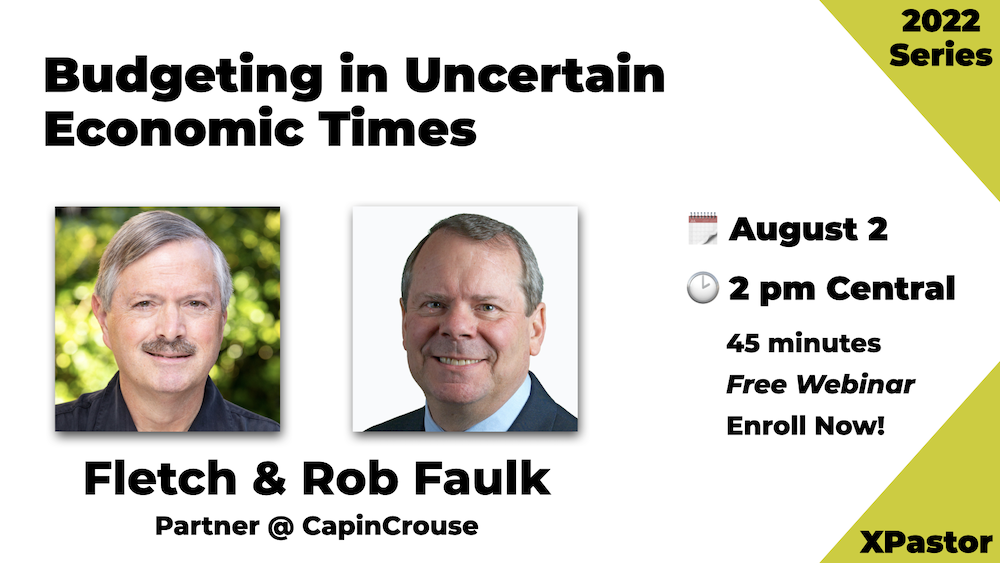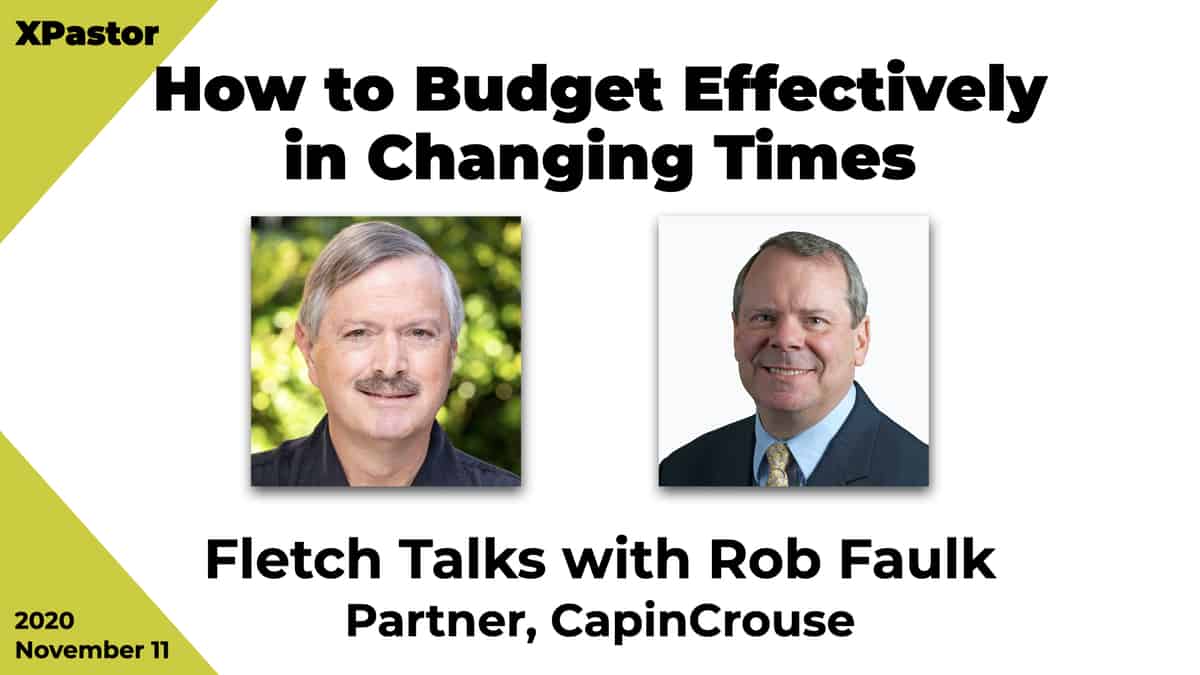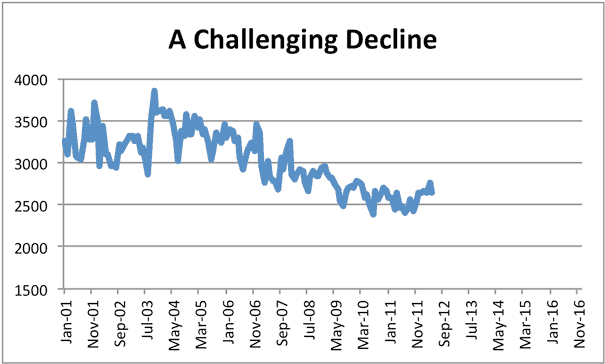For a homework assignment in the XPastor Online Course, Operations 103—Finance, I chose to compare the budget process of First Assembly in Winston-Salem, Lakeside Church in Greensboro, Georgia, Berean Bible Church in Greene, New York and Church of God of Prophesy.
First Assembly Budget Process
I really appreciated the article by Michael Comer on his take of church budgeting and the specifics of how they do the process at First Assembly of God in Winston-Salem. As I walk through their process, I will compare it to ours at Foothills.
First Assembly uses a “bottom-up” budgeting approach. Michael describes that as an approach that allows each department to submit the amount they need to accomplish their ministry for the year. Those amounts are submitted for approval. He compares that to a “top-down” approach where a central leader dictates the budget amount and the ministry leaders determine how that amount will be allocated.
At Foothills, we use a combination of these approaches. In some cases, it is a process of “leading from the side.” For the departments that would usually be considered Operational or Administrative, the budgets are determined by researching historical budget levels and discussing those amounts with the department heads as they impact their needs and goals for the upcoming year. For those areas that might be considered more direct ministry (Youth, Women’s and Men’s Ministry, etc.) the ministry head will be given the historical budgets and asked to submit their budget for the next year as a starting point for conversation and ultimate authorization.
Here is the process as outlined for First Assembly and how it compares to Foothills:
1. Planning Meeting—Spending tied to goals
First Assembly takes a pastoral retreat where the Senior Pastors review the past year and cast vision for the upcoming one. Each staff pastor shares their own review and vision for the upcoming year and how it relates to the overall vision for the church as a whole. These goals are reviewed throughout the year.
At Foothills, the Senior Pastors (there are two brothers who have shared this role for more than 25 years) have individual annual reviews and goal setting with each staff pastor. After these meetings take place, the budget process begins.
2. Department/pastor submits budget to Senior Pastor—Budget communicated
At First Assembly, after they analyze and approve each goal, the pastor submits their budget.
At Foothills, the Administrative Pastor meets with the Staff Pastors and Department Heads in September to begin the planning process for the next year. This is the beginning of the budget process for all departments at Foothills. Staff Pastors and Department Heads create their plans and goals for the next year. The Finance Department supports them with historic costs of events and helps project costs for new events planned.
3. The Senior Pastor prioritizes and reviews with finance director the budget tied to overall organizational goals
At this point, for First Assembly, the Senior Pastor reviews the budgets and sets the priorities based on the overall church goals. The Finance Director may be included in this part of the process. At Foothills, after both of the bottom up and top down processes are completed, they would be taken to the Senior Pastors for review as they connect to the general budget for the church as a whole.
4. Changes discussed with departments—Budget communicated again
This point of the process is similar with both of our churches. We talk and sometimes compromise to accomplish a final budget. At Foothills, by October 31, each ministry and department submits their budget request to the Administrative Pastor. During the first week of November, dialogue takes place regarding any needed adjustments.
November 7 is the target date for the meeting with Administrative and Senior Pastors to review the entire church proposed budget.
5. Revised budget sent to budget committee—Congregational participation gained
At First Assembly, the pastoral staff nominates four members of the congregation to serve for two years on a budget committee of eight people. One of the members is also a member of the board.
The third Tuesday in November is the Foothills Church Board Meeting where final approval of the budget is sought. If the budget is not approved, modifications are made and the budget is resubmitted to the board the following month.
Lakeside Church at Lake Oconee
Although Lakeside’s specific budget process is not outlined in detail, I chose to review the involvement of the congregation which is very different than our procedure at Foothills. Our philosophy and experience is that the congregation trusts the Board of Directors, Senior Pastors and Staff to create and execute a budget that honors God and executes His purposes.
We make our annual report available at the beginning of the year for the previous year and the Administrative Pastor has an open door policy for anyone who has questions or input. It seems a lot easier than 2,000 people voting on a budget annually, but I understand the intention of full transparency.
Lakeside Church ties their budget process directly to their vision of Loving God, Connecting People and Changing Lives. They feel strongly that they need to be transparent and authentic about how the church goes about God’s work.
The congregation votes to approve their budget, among other items, at an annual meeting. They make the proposed budget available to the congregation approximately two weeks before this meeting. The staff is available during that two-week period to answer questions that the congregation may have regarding the budget.
There are quarterly meetings during the year to keep the congregation informed about the budget performance.
A leadership team meeting is held monthly to discuss various issues, budget review being key. All members of the congregation are invited to attend as well.
Berean Bible Church
Berean breaks down their budget process into five groups:
- Ministry Personnel—Salaries, insurance, and related expenses. This group is headed up by “Stewards” with input from Elders and Building & Grounds.
- Missions and Outreach—Missionaries both local and foreign. Elders head up this group with input from the congregation.
- Operating Expenses—Including Administration, Office Support and Building & Grounds. Led by Building & Grounds with input from Elders, Servant-Leaders and Stewards.
- Ministry Expenses—Children and Family Ministries, Outreach, etc. The Elders are responsible for this expense group with input from Servant-Leaders and Ministry Leaders.
- Capital Expenditures—Equipment, facilities enhancements. Stewards are responsible for this group with input from Elders and Building & Grounds.
The people responsible for these groups develop the details of the budget for their areas and submit their proposal to the Budget Committee for consideration. They have at least one congregational meeting for questions and input before it goes before the whole congregation for approval. If the majority of the church members reject the budget, it is returned to the Budget Committee for “action.”
I would like to see more about the timeline of these events and how they tie their budget to their vision. It still makes my stomach nervous to have the members of the congregation responsible for the final approval of a budget. I’m just sayin’…
Church of God of Prophecy Budget Process
I reviewed the Effective Budget Procedures for Churches that was originally developed by the Texas Methodist Foundation. It seems to be a manual for the entire denomination.
I liked the philosophy that this manual proposed that “A church budget declares, clearly and loudly, ‘this is who we are as the people of God.’” I have never forgotten the teaching that if you want to know what an individual or a church truly believes, look at their calendar and their checkbook.
Church of God of Prophecy (CGP) begins their process with a Budget Development Committee consisting of three or four people appointed from the Finance Committee. They join with a Senior Pastor, a board member and a lay leader. Their purpose is to gather information, interview department heads, process the budget proposals for the different departments and develop a proposed budget.
As I indicated before, our process is not committee driven. The members of the church have access to the annual financial statement and are represented by board members in the process who have strong financial and business backgrounds.
CGP has a very specific timeline that they follow for their budgeting process.
| 11 weeks | Appoint Budget Development Committee. |
| 10 weeks | Budget Development Committee Meeting. |
| 9 weeks | Committee reviews process with “expense center leaders” and distributes “Budget Request Forms.” Budget process begins. |
| 7 weeks | Interview expense center leaders. |
| 5 weeks | Receive Budget Request Forms. Begin line item budget presentation for Finance Committee. |
| 3 weeks | Present proposed budget to committee on finance. |
| 1 week | Prepare line item and narrative budgets for approval by church conference.` |
| 0 week | Present line item and narrative budgets at church conference or board meeting (I like this part). Be prepared to answer questions. |
CGP has some helpful information explaining the budget process to committee members who may not have experience. Their flow chart of the process seems simple and complete. What I found to be strongest was their focus on creating a Narrative Budget to create a more dynamic communication of their budget and how it relates to ministry for the whole congregation.
I appreciated learning that even though I don’t have a committee doing this process, we need to communicate and create a budget that properly aligns with and communicates the vision that God has given us as a church. That was clearly supported by David Fletcher’s article on XPastor from 2012: How Vision Sets the Budget: A Glimpse at the Largest Church in America.
In David’s analysis of Joel Osteen’s church, he proposes that not only do we need a clear vision, clearly communicated, but we need to determine if we are accomplishing that vision. A budget, in many ways, answers some of our questions about realizing our goals.
At Foothills Christian Church we have a mission:
- Grow in our ability to love and worship God.
- So how many people are worshipping?
- Are they experiencing vibrant, intimate worship?
- How are they growing in their ability to love and worship?
- Share the truth of Jesus Christ with our community.
- How are we sharing the Truth?
- How is our community responding?
- How would we know if we were successful?
- Train and utilize church members in ministering to others.
- How many church members are being trained to minister?
- Are we growing in this area?
- How effective is our ministry?
- Unite with and support the effort of the entire Body of Christ.
- Are we uniting?
- How are we supporting?
- What tangible efforts have we and will we engage in?
- Connect with families, adults, children and youth—and support them in their decision to walk with God.
- How are we connecting with these people?
- How are we supporting them in their walk with God?
- Is there growth in this area?
As we finalize our budget for 2014, we will attempt to answer some of these questions and create a budget that expresses these priorities.
North Point Ministries
Although North Point is somewhat bigger (about ten times as big), I wanted to look at their process and see if there were things that we could learn and incorporate from their budget procedure.
The first sentence was daunting: “Budget preparation for the campuses of North Point Ministries begins in May….” Well, there is something to shoot for. They go on to say, “The budget request period usually begins in the middle of July and ends in early September.”
To compare to Foothills, we request goals and budgets in September to be turned in by the end of October.
North Point gives their department heads as many tools as they can to determine their budgets:
- Current year budget spreadsheet
- A monthly expense spreadsheet
- General Ledger details of expenses
- A budget timeline
- Strategy Worksheet
This really drives me to give as much support to the department and ministry heads as I can. Nicely done, North Point.
The timeline for the budget process begins the middle of September with the tools being posted online. Ten days are given to budget meetings to explain the process and support the people involved. Five weeks later the budget requests are due. The following three weeks are given to the management and leadership teams and the lead pastors to review. The final budget is prepared during the next week and submitted to the stewardship team for their review and approval. The budget is then submitted to the church Elders for final approval.
I like the process and timeline of this system (maybe because it is what I am used to). It does push me to give better tools for those departments that submit their budgets to me.








